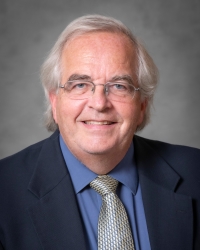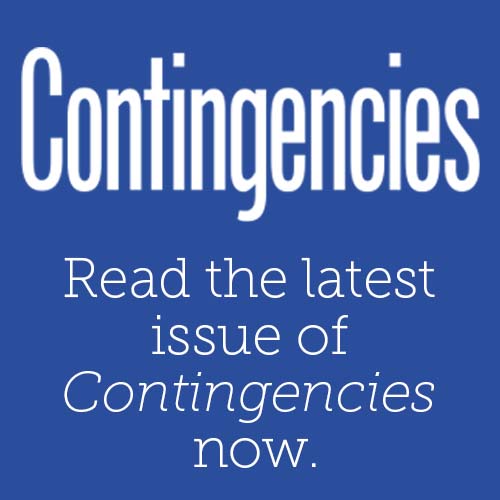The dues renewal process for 2017 is now open. After five consecutive years of no increase in dues, the full regular dues rate for 2017 is $615, an increase of $10. This will ensure that our financial position remains strong as the Academy continues to provide the voice of objective, nonpartisan actuarial analysis to policymakers in the United States. Members may log in here to pay and make changes to your account. Coinciding with the dues renewal, the Academy released “The Meaning of Your Membership,” a high-level look at the Academy’s 2016 activities, publications, and achievements. (November 09, 2016)
The November HealthCheck recaps Centers for Medicare & Medicaid Services’ (CMS) Acting Administrator Andy Slavitt’s keynote address at the Academy’s Annual Meeting and Public Policy Forum last week in Washington; covers recent state, federal and CMS rules and approvals; and notes the Nov. 11 deadline for participating in the health care “Actuarial Challenge.” (November 09, 2016)
So many questions. To which, for now, our imperfect reasoning can only guess at the answers. To get on with our work, rolling the boulder up the mountain and growing as a profession, we can’t and don’t have to be paralyzed by uncertainty. We can accept our limitations, and recognize the good news that we don’t have to be perfect thinkers about the future to meet its challenges and embrace its opportunities. What we do need is an ability to effectively respond to whatever changes may happen, both on an individual level and as a profession. I believe this means recognizing that the era of actuary as mere technician is over. More than ever, actuaries need to apply advanced business skills and deep understanding of current developments—not just technical expertise—in dealing with clients, stakeholders, and the public. It has been said that: “The wisdom of the world resides on bookshelves: …read by few …understood by fewer, and …acted upon by few who read and understand." Many of us fall into this category of being able to read and understand new concepts, but being reluctant to act on them. We must challenge ourselves to become more like thermostats than thermometers. In a room, a thermometer is able to precisely inform someone of the exact temperature of the room. But, if the room is too hot or too cold, the thermometer is not able to influence the environment. A thermostat, on the other hand, is similar to a thermometer in its ability to precisely measure the temperature of the room. And, the thermostat is able to influence the temperature of the room by sending a signal to the heating or cooling system if the temperature has varied from the desired level. We have the ability to be like thermostats in our business environment. By understanding complex issues, we can choose to influence the environment regarding these issues and thus impact the outcome of situations. We must avoid being like thermometers that understand the issues but do not influence the environment with this understanding. We must move the idea of professionalism from an abstract concept to a practical application. That’s where the Academy comes in. The Academy provides us with the ability to adapt to change and act—in a structured, deliberative, and timely way. The founders of the Academy were truly visionary in understanding that we need an ongoing organization that performs this essential role for the whole profession.
The Academy is the fulcrum of our profession, informed by the past so that we can smartly prepare for the future. We do this through our vital work with policymakers and the vital and fundamental structures for actuarial professionalism established here, and through our interface with members across practice areas and with the public. The public policy and professionalism questions and changes that the Academy reports on, responds to, and helps shape transcend technical changes in practice. They involve matters of the public interest, ethics, sound policy, evolving norms, and other factors. The Academy is where actuaries in our country deliberate on the big-picture issues and what they mean for successful actuaries and a successful society. I want to thank each of you for being here—being part of the link to the future of our profession. Your attendance reflects that you already understand the valuable role of the Academy in ensuring a deep and informative connection between actuaries and public policy and professionalism experts. I look forward to the remaining time we have together here in Washington and to the year ahead. With our committed leadership and volunteers, I am confident that we’ll have a productive year of working together to evaluate and prepare for the changes affecting us. I encourage all of us to continue to roll the boulder up the mountain and to be thermostats, influencing our environment. And I know we’ll do right in the Academy as the living link of our profession by “paying our knowledge forward” to future generations. Thank you. ()
The Longevity Risk Task Force gave a presentation to the Financial Stability Oversight Council (FSOC) Nonbank Designations Committee on longevity risk in annuity and life insurance. (November 01, 2016)
The SVL Interest Rate Modernization Work Group submitted comments to the NAIC's VM-22 (A) Subgroup on its exposure draft on the VM-22 maximum valuation interest rates for income annuities. (November 02, 2016)
The SVL Interest Rate Modernization Work Group submitted comments on valuation rate buckets to the NAIC's VM-22 (A) Subgroup on its exposure draft on the VM-22 maximum valuation interest rates for income annuities. (November 02, 2016)
Actuarial Board for Counseling and Discipline (ABCD) Chairperson Janet Fagan outlines the resources and guidance available to actuaries in “ABCD Guidance: A Critical Element of Actuarial Self-Regulation,” covering professional ethics, the need for public confidence, and improving practice. (October 31, 2016)
The Life Operational Risk Work Group submitted comments to the NAIC's Operational Risk (E) Subgroup on proposed operational risk factors and growth charge for the life risk-based capital (RBC) formula. (October 31, 2016)
The October issue of Actuarial Update covers the Pension Practice Council’s issue brief on the challenges facing the Pension Benefit Guaranty Corp.’s multiemployer program; the Academy’s upcoming Annual Meeting and Public Policy Forum in Washington; North American actuarial organizations expand a cross-border discipline agreement; the approaching deadline for participation in the health care “Actuarial Challenge;” and the “Professionalism Counts” column looks at Actuarial Board for Counseling and Discipline guidance. (October 31, 2016)
The Pension Committee, Multiemployer Plans Subcommittee, and Public Plans Subcommittee submitted comments to the Actuarial Standards Board (ASB) on a draft actuarial standard of practice (ASOP) on risk assessment and disclosure. (October 31, 2016)







